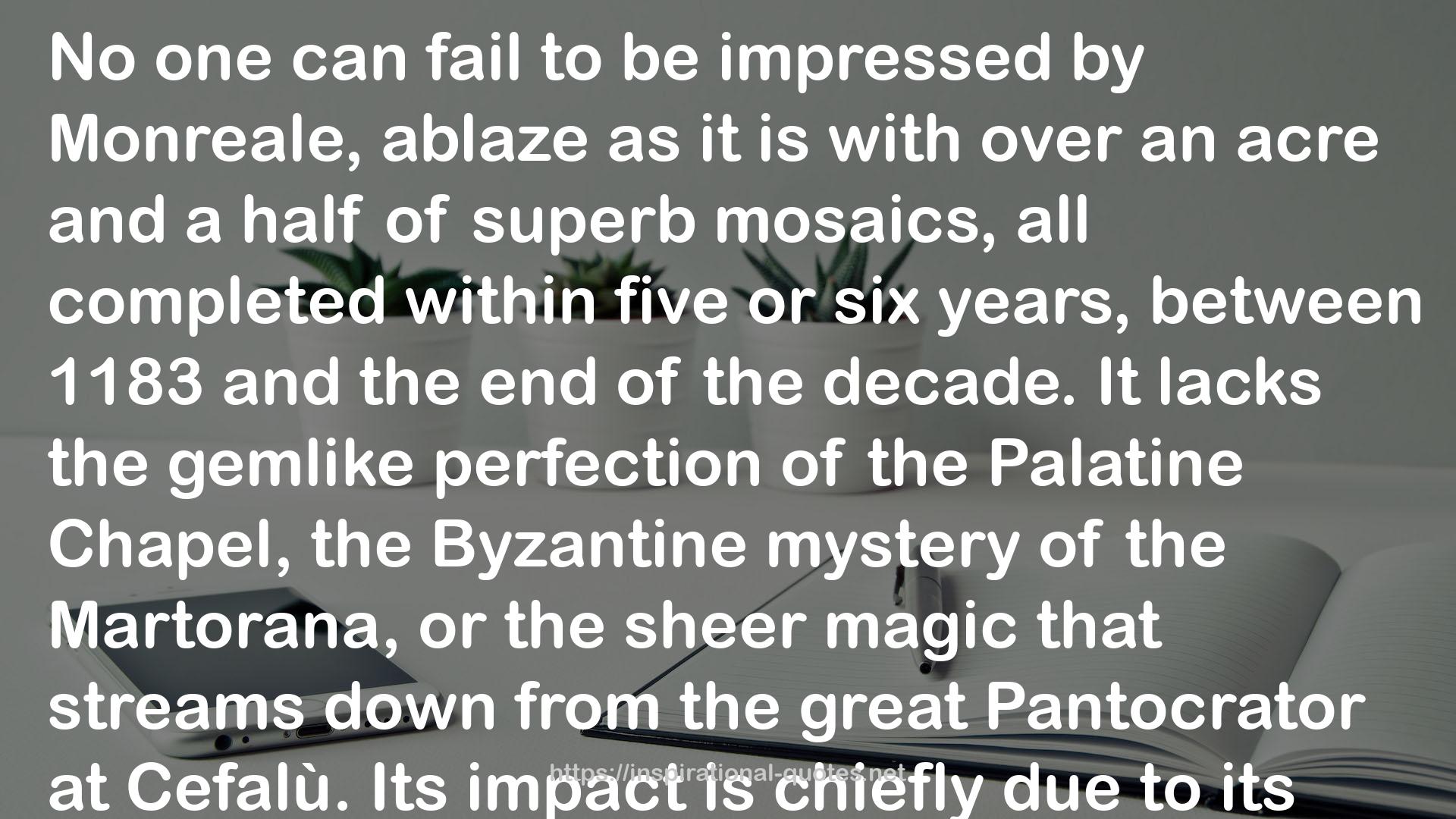" No one can fail to be impressed by Monreale, ablaze as it is with over an acre and a half of superb mosaics, all completed within five or six years, between 1183 and the end of the decade. It lacks the gemlike perfection of the Palatine Chapel, the Byzantine mystery of the Martorana, or the sheer magic that streams down from the great Pantocrator at Cefalù. Its impact is chiefly due to its size and its splendor. But this impact, like the cathedral itself, is colossal. Wandering slowly through the vast length of the building, one might be forgiven for thinking that virtually every Bible story is here illustrated. Nor would one be very far wrong; but there is one particular mosaic—and not a narrative one either—that should on no account be missed. Look now to the second figure to the right of the central east window. There is no problem of identification: in conformity with the usual canons of the time, the name runs down the side of the halo for all to read: SCS. THOMAS CANTUR. Whether or not it bears any resemblance to the martyred Archbishop we have no idea;*3 it remains, however, the earliest certain representation "
― John Julius Norwich , Sicily: An Island at the Crossroads of History
